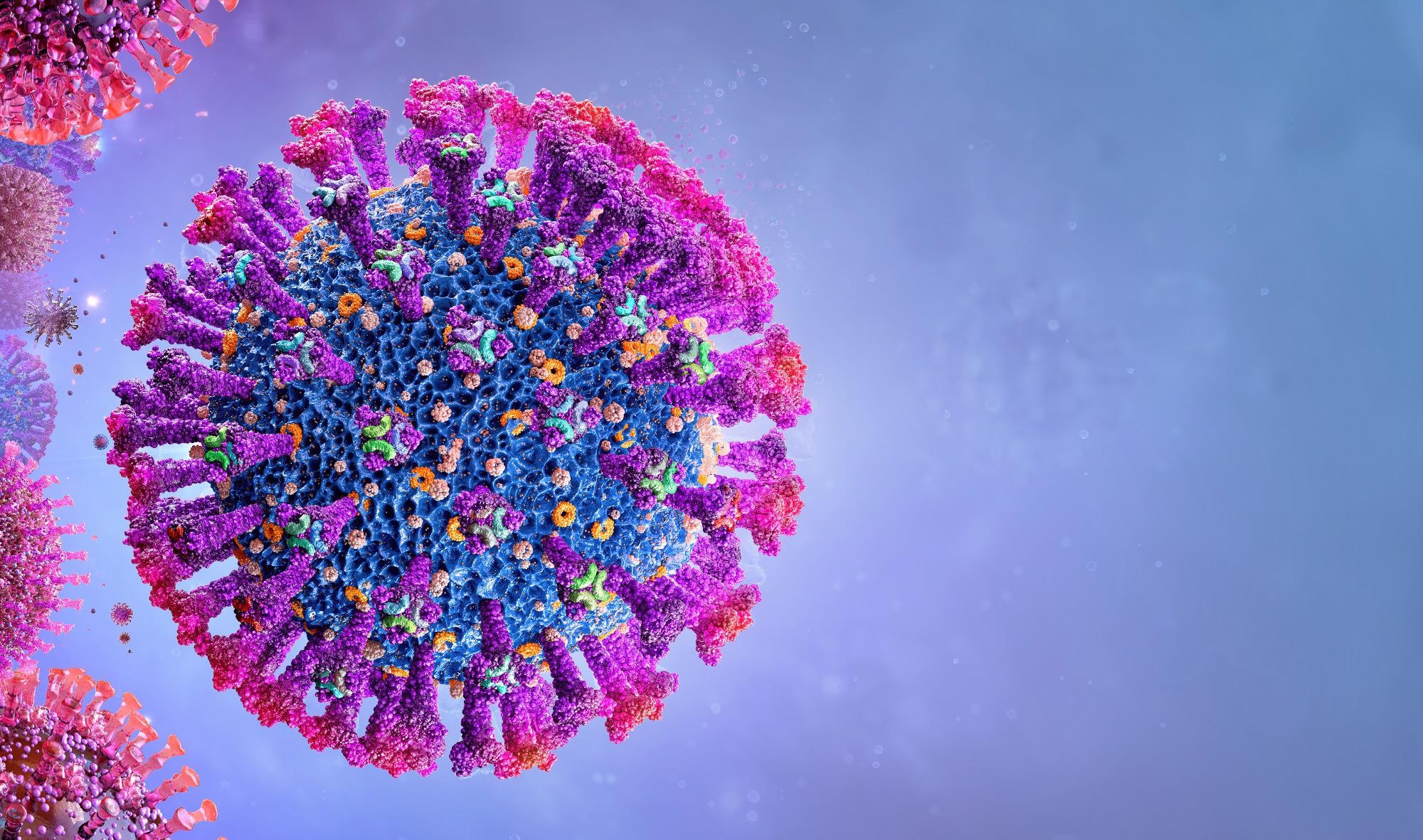Nanomedicine refers to the application of nanoparticles for disease diagnosis, treatment, and prophylactic purposes. Nanomedicine has widely been used to develop therapeutic interventions against a variety of viral infections, including hepatitis B virus, human immunodeficiency virus, respiratory syncytial virus, influenza virus, and coronaviruses.

Image Credit: Corona Borealis Studio/Shutterstock.com
Nanomedicines in coronavirus disease 2019
Nanoparticles used in the nanomedicine exhibit unique physicochemical properties. The small size of nanoparticles allows them to easily cross intracellular barriers/membranes and interact with a variety of biological components of similar size. Moreover, the surface polarity of nanoparticles can be modified by various functional groups to increase their binding efficacy and stability and reduce aggregation and precipitation.
Given these specific properties, nanoparticles are increasingly being used to develop biomedical strategies against severe acute respiratory syndrome coronavirus 2 (SARS-CoV-2), the causative pathogen of coronavirus disease 2019 (COVID-19) pandemic.
Nanoparticles with antiviral properties, such as iron-oxide, copper-oxide, and silver nanoparticles, can be used to entrap and inactivate SARS-CoV-2. These particles destroy viruses by disrupting cell membrane, damaging proteins and DNA, forming free radicals, inhibiting biofilm formation, or exerting heavy metal toxicity. Recently, iron-oxide nanoparticles have been shown to interact with the spike protein of SARS-CoV-2 and alter its structural conformation.
These nanoparticles can be used in surface disinfectants and air filter systems to destroy SARS-CoV-2. Moreover, personal protective equipment (PPE) can be incorporated with antiviral nanoparticles to provide improved protection to healthcare workers. For instance, zine-oxide nanoflower can be used in cotton fabrics to entrap and destroy the virus.
Nanoparticles for COVID-19 diagnosis
Rapid and accurate detection of COVID-19, contact tracing, and isolation of infected persons are the key measures to combat the pandemic. Nanoparticles can be modified to develop biosensors for detecting a wide variety of diagnostic biomarkers, including DNA, RNA, proteins, enzymes, and antibodies. These nanoparticle-based biosensors serve as a valuable platform for the rapid diagnosis of COVID-19.
Dual-functioning plasmonic biosensors are capable of detecting select SARS-CoV-2 sequences with high sensitivity. These biosensors function by targeting the energetics of DNA-RNA hybridization. Graphene-oxide nanoparticles coated with fluorophore-attached target DNA sequence have been developed to detect viral helicase. Moreover, graphene-conjugated anti-spike antibodies have been developed to detect SARS-CoV-2 in biological samples. This method does not require any labeling or sample pretreatment and can detect SARS-CoV-2 at very low concentrations.
Nanoparticles for COVID-19 treatment
Many strategies have been cultivated to use nanoparticles for COVID-19 treatment and drug delivery. Besides directly targeting SARS-CoV-2, nanoparticles can be used as immunomodulatory agents to prime the immune system and prevent hyperinflammation in COVID-19 patients.
Graphene-oxide nanoparticles have been found to enhance adaptive immune response and viral clearance by increasing the levels of macrophages and T cells. Nano-diamonds play a vital role in reducing hyperinflammation by inducing anti-inflammatory macrophages. Similarly, carbon and graphene sheets can be modified to eliminate pro-inflammatory mediators (cytokines and interleukins) from the blood.
Lipid nanoparticles have been used for targeted delivery of SARS-CoV-2-specific small-interfering RNAs (siRNAs) in the lungs and suppression of viral replication. Poly lactic-co-glycolic acid polymer-based nanosponge has been developed to prevent SARS-CoV-2 from infecting cells. The nanosponge has been coated with human lung epithelial cell and macrophage membrane to mimic the cellular physiology required for SARS-CoV-2 host cell entry. This synthetic cellular nanosponge acts as a target for SARS-CoV-2 and neutralizes the virus.
Liposomes, which are lipid bilayer vesicles, serve as a powerful platform for drug delivery. Synthetic peptide-based liposomes have been developed to eliminate SARS-CoV-2 by inducing cytotoxic T cells. A liposome-based inhalable formulation of hydroxychloroquine has been developed and tested in rats. The formulation has been found to increase the drug concentration in the lungs by 30-fold.
A cyclodextrin-based formulation of remdesivir has recently received approval from the US Food and Drug Administration (FDA) for COVID-19 treatment. Cyclodextrin nanoparticles are cyclic polysaccharide-based particles that are widely used in pharmaceutical companies as solubilizers to dissolve hydrophobic and hydrophilic drugs.

Image Credit: AmazeinDesign/Shutterstock.com
Nanoparticles for COVID-19 vaccination
Two lipid nanoparticle-formulated mRNA-based COVID-19 vaccines containing the SARS-CoV-2 spike protein as target immunogen have received approval from the FDA. These two vaccines (mRNA-1273 vaccine by Moderna and BNT162b2 vaccine by Pfizer/BioNTech) have shown more than 90% efficacy in preventing SARS-CoV-2 infection and symptomatic COVID-19 both in clinical trials and in real-world setups.
Two nanoparticle-based COVID-19 vaccine candidates are currently under development. For instance, the NVX-CoV2373 vaccine (Novavax) containing trimeric spike protein as antigen have been found to induce spike-specific neutralizing antibodies and T cell response in human clinical trials. Another nanoparticle-based vaccine candidate containing spike receptor binding domain (RBD) as antigen have shown similar immune responses in both preclinical and clinical trials.
The SpyTag/SpyCatcher technology is a covalent fusion system widely used for the irreversible conjugation of recombinant proteins. In a Chinese nanovaccine candidate, this technology has been used to conjugate spike RBD with ferritic nanoparticles. This vaccine candidate has been found to induce long-lasting antibody and memory immune responses in mice for at least 7 months.
Taken together, nanomedicine is considered as a promising approach for the diagnosis, treatment, and prevention of COVID-19.
References:
Further Reading